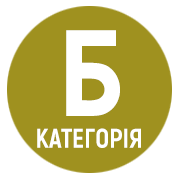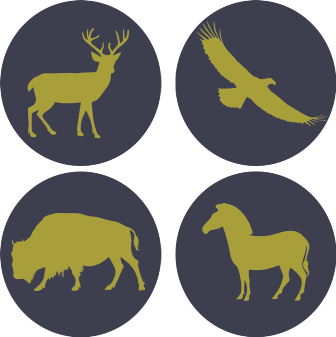ZOOCULTURE ACHIEVEMENTS OF THE ZOO OF THE BIOSPHERE RESERVE "ASKANIA NOVA" AND ITS IMPACT ON THE INSTITUTIONʹS FUNCTIONING
DOI:
https://doi.org/10.53904/1682-2374/2025-27/5Keywords:
зоокультура, одомашнення, акліматизація, гібридизація, розведення, реінтродукціяAbstract
Founded in the second half of the 19th century by Fridrich Falz-Fein, the zoo was the first center of zooculture in the Northern Black Sea region. Between 1918 and 2022, 5339 individuals of ungulates from Askania Nova have been introduced into zoos, zoocenters, hunting farms, and private collections across Eurasia, of which 2533 were introduced since Ukraine gains independence. On his basis, the collection of wild animals and their wild forms was developed, long-term experiments on domestication, acclimatization, and hybridization were conducted, as well as the breeding of rare and endangered mammal and bird species of national and World fauna. The zoo played an important role in establishment of the first industrial breeding farms for ratites birds (Paleognathae) in Ukraine. For a long time in Askania Nova, work was carried out on milking the common eland Taurotragus orix (Pallas, 1766), the milk of which was used in the local hospital for the treatment of stomach and duodenal ulcers. Long-term experiments with hybrid animals of various ages and combinations of crosses revealed physiological and anatomical features of their development, reproductive capacity and patterns of gametogenesis among the Cervidae, Caprinae, and Bovidae families. Several projects have been implemented to preserve rare species, in particular, the return of Przhevalskyʹs horse to the wild in Mongolia (1992, 1993), the creation of semi-wild habitats for the saiga Saiga tatarica (Linnaeus 1766) and the Turkmenian kulan Equus hemionus kulan (Groves & Mazák, 1967) in the Zaporizhzhia, Kherson, and Odesa regions and the Autonomous Republic of Crimea; the breeding and expansion of the ruddy shelduck Tadorna ferruginea (Pallas, 1764) in Ukraine, the autumn-winter population of which in Askania Nova reached 10.9 thousand individuals. The sale of zoo animals and their derivatives, along with environmental educational activities, became a significant addition (12 million hryvnias in 2021) to the institutionʹs budget. Military operations launched by the Russian Federation in 2014 prevented the implementation of the zooʹs project on the expansion, study and preservation of ungulate mammals and birds, as well as undermined international cooperation.
References
Береговий В.К. (2012). Страусівництво як перспективна галузь тваринництва. Агросвіт, № 11: 29–32.
Волох А.М. (2020). Вирощування диких копитних : монографія. Херсон: Олді-Плюс, 400 с.
Гавриленко В.С., Думенко В.П., Смаголь В.О. (2009). Розведення сайгака (Saiga tatarica Linnaeus, 1766) у Біосферному заповіднику "Асканія-Нова" та вплив різних чинників на стан його популяції. Екологічний бюлетень, №2–3: 90–93.
Гавриленко В.С. (2017). До 25-річчя повернення коня Пржевальського (Equus рrzewalskii Poljakov,1881). Вісті Біосферного заповідника "Асканія-Нова", 19: 91–95.
Гавриленко В.С., Ясинецька Н.І. (2018). Збереження рідкісних видів через інвестиційні проекти в зоокультурі. Вісті Біосферного заповідника "Асканія-Нова", 20: 103–105.
Дарвін Ч.Р. (2009). Про походження видів шляхом природного відбору. Львів : Піраміда, 548 с.
Корінець Н.О., Дьяков О.А. (2024). Результати розведення кулана туркменського Equus hemionus kulan в Тарутинському степу. Вісті Біосферного заповідника "Асканія-Нова", 26: 247–252.
Постанова Кабінету Міністрів України від 2 квітня 1994 р. № 213 "Про присвоєння імені Ф.Е. Фальц-Фейна Біосферному заповіднику "Асканія-Нова". https://zakon.rada.gov.ua/laws/show/213-94-%D0%BF#Text
Мезінов О.С. (2024).Ключові локалітети сучасного розповсюдження огаря Tadorna ferruginea в Україні. Біорізноманіття, екологія та експериментальна біологія, 26(2): 54–71. https://doi.org/10.34142/2708-5848.2024.26.2.06
Мезінов О.С. (2025). Огар Tadorna ferruginea на півдні України: особливості біології виду та технології його відтворення: дис. докт. філософ. PhD: 091. Харків, 236 с. http://hnpu.edu.ua/sites/default/files/files/Rada/Razova_rada/07_25/dis_Mezinov.pdf
Розпорядження Кабінету Міністрів №472-р 19 серпня 2002 "Про віднесення наукових обʹєктів до таких, що становлять національне надбання". https://zakon.rada.gov.ua/laws/show/472-2002-%D1%80#Text
Семенюк П.А. (1994). Безкілеві птахи. Літопис природи Біосферного заповідника "Асканія-Нова" за 1993 рік, т. 11, с. 155–158.
Смаголь В.О. (2017а). Популяційно-екологічні особливості сайгака (Saiga tatarica tatarica L.) в заповіднику "Асканія-Нова": дис. … канд. біол. наук : 03.00.16. Асканія-Нова, 237 с.
Смаголь В.О. (2017б). Штучне вирощування молодняку сайгака за вольєрного та напіввільного утримання в зоопарку "Асканія-Нова": методичні рекомендації. Київ: Аграрна наука, 36 с.
Треус М.Ю. (1994). Інтродукована фауна. Літопис природи Біосферного заповідника "Асканія-Нова" за 1993 рік, т. 11, с. 422–424.
Akimushkin, I.I. (1990). The world of animals: Insects, spiders, domestic animals (2nd ed., revised and expanded). Moscow: Mysl, 462 pp.
Agro Soyuz. Ostrich farming. Retrieved from http://modelagro.com/straus/
Bevolskaia, M.V. (1993). Nesting behaviour of ostriches in the conditions of southern Ukraine. In Fundamental research in zoos. Rostov-on-Don: Litera-D, pp. 119–126.
Bevolskaia, M.V. (2004). Reproduction of ostriches: Nesting, egg laying, incubation. Kyiv: Logos, 240 pp.
Mezynov, A.S., & Zubko, V.N. (2010). Biological features of the ruddy shelduck, Tadorna ferruginea (Aves, Anseriformes), in the conditions of the Askania Nova Reserve. Vestnik Zoologii, 44(1), 63–71. http://mail.izan.kiev.ua/vz-pdf/2010/1/07_Mezinov_Zubko.pdf
Steklenev, E. P. (2001). Distant hybridisation of animals. Kyiv: Ahrarna nauka, 232 pp.
Treus, V.D. (1968). Acclimatisation and hybridisation of animals in Askania Nova. Kyiv: Urozhai, 315 pp.
Treus, M.Yu. (1983). Behaviour of the antelope kanna in Askania Nova. Moscow: Nauka, 88 pp.
Volokh, A.M. (2014). Hunting mammals of the steppe zone of Ukraine: A monograph. Kherson: FLP Hryn D.S., 412 pp.
Zavadovskyi, M.M. (1924). General outline of the history of "Askania Nova". In M.M. Zavadovskyi & B.K. Fortunatov (Eds.), Askania Nova: The Steppe Reserve of Ukraine. Collection of articles. Moscow: State Publishing House, pp. 1–60.
Zubko, V.N., Popovkina, A.B., Havrylenko, V.S., & Semenov, N.N. (1998). Population of the ruddy shelduck in the Askania Nova Reserve: History of formation and current status. Kazarka, 4: 231–243. https://kazarka.org/wp-content/uploads/Volume04/24zubko-et-al_casarca4.pdf
Zubko, V.N., Havrylenko, V.S., & Mezynov, A.S. (2006). Breeding of wild birds. Geese and shelducks: Methodical recommendations. Askania Nova, 85 pp.
Zubko, V.N., & Mezynov, A.S. (2008). Breeding of wild birds. Ducks: Methodical recommendations. Askania Nova: "Askania Nova" Biosphere Reserve, 112 pp.
Woldemar v. Falz-Fein. Askania Nova. Verlag von J. Neumann – Neudam, Berlin, 1930, 324 s.






